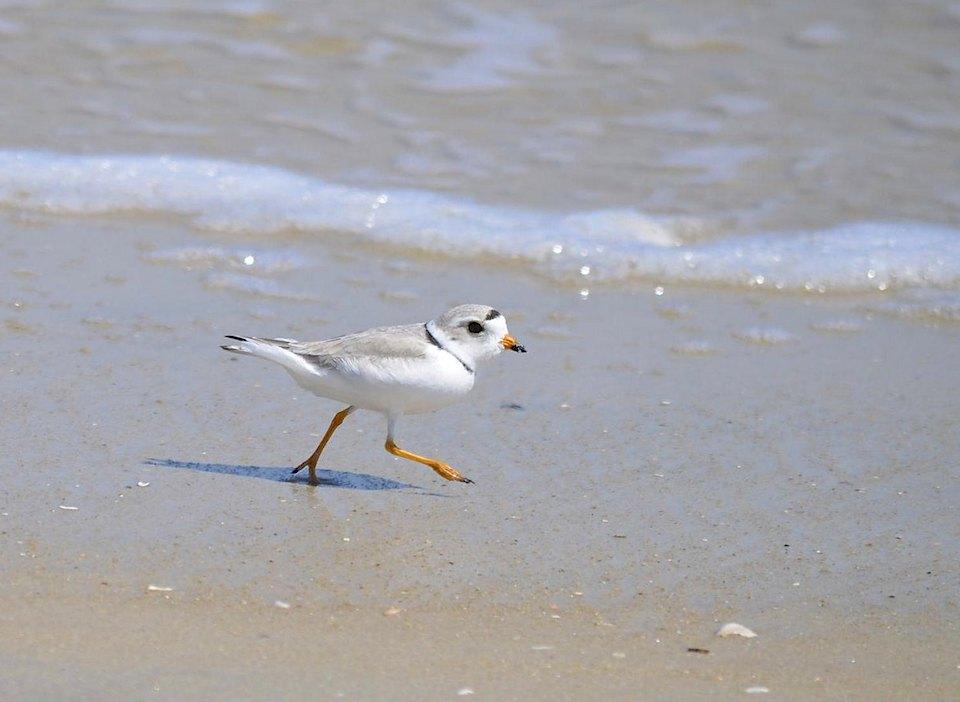
Interior Secretary Bernhardt is being urged by former Interior Department officials not to weaken the Migratory Bird Act Treaty/NPS file
Interior Secretary David Bernhardt is being urged by a bipartisan collection of former Interior Department officials not to alter the Migratory Bird Treaty Act.
The changes being pursued by the Trump administration would shield companies whose operating practices kill migratory birds.
“This is a new, contrived legal standard that creates a huge loophole in the law by allowing companies to engage in activities that routinely kill migratory birds so long as they were not intending to do so,” wrote the former officials in a letter to Bernhardt. “It is now more urgent than ever that we implement policies to conserve our vanishing bird species rather than unraveling decades of progress and crippling the law that protects them.”
The signers include former deputy secretaries, assistant secretaries, U.S. Fish and Wildlife Service directors, and Migratory Bird Conservation chiefs who had direct responsibilities for implementing migratory bird policies and served in their positions under every presidential administration from President Nixon to President Obama.
"This legal opinion is contrary to the long-standing interpretation of the law held by every administration (Republican and Democrat) since at least the 1970s," reads the letter (attached). "The proposed rule turns the MBTA’s straightforward language into a conclusion that only the purposeful killing of migratory birds violates the Act."
The Migratory Bird Treaty Act turned 100 in 2018. It has been applied for decades by federal agencies and the courts to protect birds not just from unauthorized hunting but also from being harmed or killed by industrial operations. Migratory birds are increasingly threatened by land development, habitat loss, and the effects of climate change.
A recent study in Science claimed that nearly 3 billion birds have vanished from North America over the past 50 years.
"This alarming decline is the equivalent of losing more than one in four birds in less than a single lifetime," wrote the former officials. "It is now more urgent than ever that we implement policies to conserve our vanishing bird species rather than unraveling decades of progress and crippling the law that protects them."
Jamie Rappaport Clark, who was director of the U.S. Fish and Wildlife Service under President Clinton and now leads Defenders of Wildlife, said "the administration is doubling down on its reckless and illegal decision to weaken the protections of the Migratory Bird Treaty Act, leaving our nation’s birds unprotected against careless corporate conduct."



Comments
our wild bird population is already declining, with many on the verge of extinction. Please stop the reckless act that would cause the deaths of millions more birds. Stop allowing corporations to destroy and decimate uor wildlife populations for greed!
You do realize this is being driven by the windmill companies, don't you? Should be fun watching the environmentalist eat the environmentalist. BTW the US Fish and Wildlife service estimates windmills kill 140,000 to 500,000 birds a year. Cats, 2.4 billion. Seems its cats not corporations decimating wildlife populations for feed.
Wind Turbine companies are not environmentalists. They are corporations who realize they can benefit economically from wind energy, but like most corporations, they don't want to be held accountable for what damage they do to the environment. There are various techniques that can be used to lessen bird mortality from turbines, and if a company is not trying to do so, they should be held accountable. Fossil fuels are responsible for more bird deaths that solar and wind energy. The big killers are, indeed, cats, but even greater is glass windows, especially on high rise buildings. I would have no problem with hefty fines for cat owners who let their cats roam. There are ways to mitigate bird collisions with windows on buildings, if architects and homeowners will use them.
While most wind turbine companies are indeed corporations they are being driven to build either by regulation or subsidy. It is the environmentalist that are driving that process. Further these companies are regulated industries. They operate under a fixed rate of return. Any "savings" by not implementing other techniques would have to be passed along to their customers not to their bottom line.
Yeah, I kill a few birds every year, but far more mice and rats. And there are 75 million of me living in the US; think of how few wind turbines kill all those birds. By the way. My owner (at least, he thinks he is) reminds me that what I do is natural. Fine me for eating a bird? You hypocrites! Just what do you call a chicken!? I couldn't catch an eagle if I tried, but you humans chew them up in your turbines. Ah, well, you're saving the planet, right? Just how about not picking on us cats!